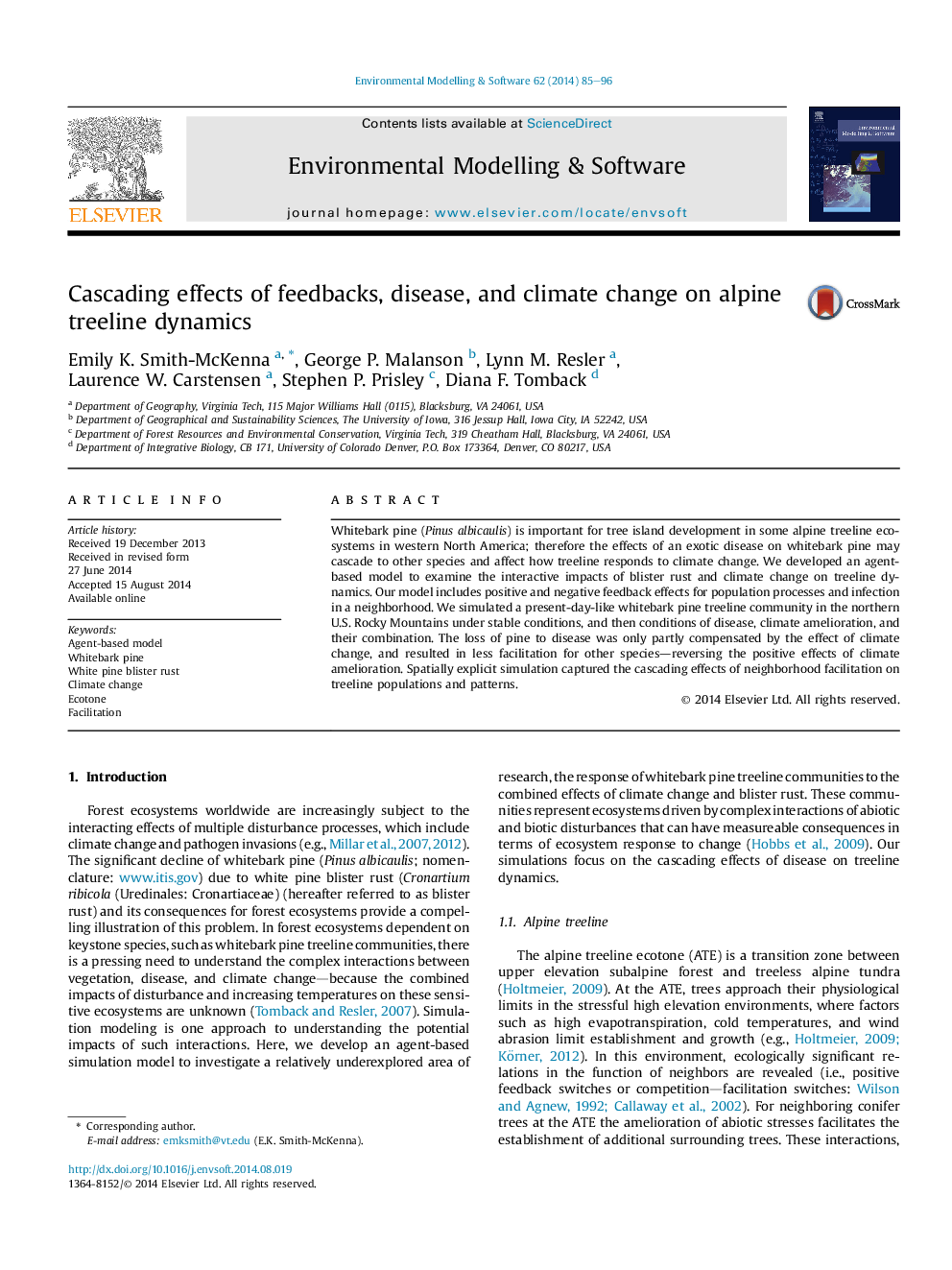| Article ID | Journal | Published Year | Pages | File Type |
|---|---|---|---|---|
| 6963643 | Environmental Modelling & Software | 2014 | 12 Pages |
Abstract
Whitebark pine (Pinus albicaulis) is important for tree island development in some alpine treeline ecosystems in western North America; therefore the effects of an exotic disease on whitebark pine may cascade to other species and affect how treeline responds to climate change. We developed an agent-based model to examine the interactive impacts of blister rust and climate change on treeline dynamics. Our model includes positive and negative feedback effects for population processes and infection in a neighborhood. We simulated a present-day-like whitebark pine treeline community in the northern U.S. Rocky Mountains under stable conditions, and then conditions of disease, climate amelioration, and their combination. The loss of pine to disease was only partly compensated by the effect of climate change, and resulted in less facilitation for other species-reversing the positive effects of climate amelioration. Spatially explicit simulation captured the cascading effects of neighborhood facilitation on treeline populations and patterns.
Related Topics
Physical Sciences and Engineering
Computer Science
Software
Authors
Emily K. Smith-McKenna, George P. Malanson, Lynn M. Resler, Laurence W. Carstensen, Stephen P. Prisley, Diana F. Tomback,
